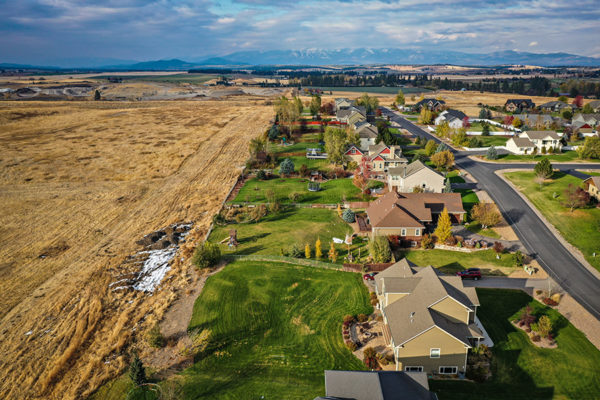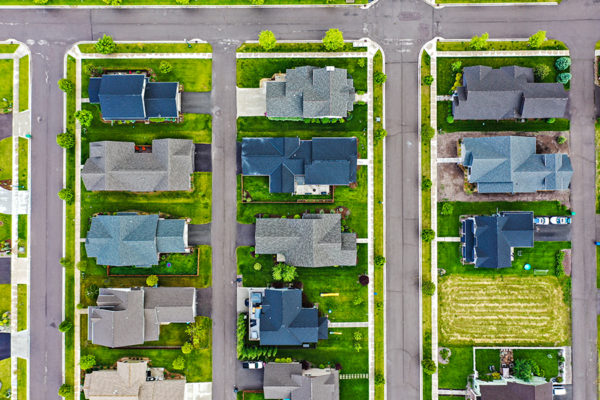If passing Montana’s litmus test for grit and authenticity means laying claim to a birthplace with a 406 prefix, then the Flathead Valley’s street cred is on a road to extinction.
That is, if the rumors are true.
Whether or not you pay any credence to the chatter, you’ve likely heard it — all new roads to Northwest Montana are paved with transplants and pandemic refugees, the tempest-tossed asylum seekers fleeing their urban markets en masse in search of mountain sanctuaries, where outdoor amenities abound, homes are a high six-figure bargain and the letter of the law is COVID-Lite.
Depending on the day of the week, the source of the tittle-tattle and which side of the water-cooler you’re standing, an unprecedented stampede of these out-of-state interlopers is afoot, with the lion’s share of them converging on Flathead County. They’re coming in droves ranging from 5,000 to 15,000 to 30,000 people and snatching up prized real estate parcels, closing on properties sight unseen and offering cash in hand.
Untethered from their office jobs by the pandemic, a grim reality that has raised the possibility and profile of remote work while brightening the allure of wide-open spaces, this torrent of trespassers is responsible for the unsightly array of out-of-state license plates on display at local trailheads and grocery store parking lots; for jacking up housing costs; depleting the rental inventory; extending the busy summer season; and hogging up the left lane of traffic.
The anecdotal evidence of a population boom centered in the Flathead has been mounting all summer, and local residents have been eager to air their grievances. But accurately sizing up the Flathead Valley’s sudden growth spurt using empirical evidence is a tricky feat, and much of the data belies the popular canard, pointing instead to a less dramatic transformation.
“When the rumors started, we heard 3,000 people. Then 3,000 became 9,000. And 9,000 became 12,000,” said Joe Unterreiner, executive director of the Kalispell Chamber of Commerce. “Most recently someone wanted me to confirm that 30,000 people have moved to the Flathead Valley in the past six months. That’s more than twice the amount of growth we’ve had in the past decade occurring in six months. I don’t have the data to refute it, but that seems pretty impossible to me. That would be a growth rate of 3% for every month of 2020. That’s impossible.”

When the rumor mill first started churning this summer, numerous posts to a community Facebook page noted a spike in volume of new driver’s licenses and title transfers for out-of-state vehicles processed at the local Department of Motor Vehicles. Anyone moving to Montana with out-of-state tags would surely act swiftly to remove the most glaring evidence of intrusion, right?
Not exactly.
“The Motor Vehicle Division pulled the vehicle registration numbers for Flathead with year-over-year comparison, and they do not indicate growth with out-of-state transfers for vehicles,” according to Anastasia Burton, a spokesperson for the state Department of Justice.
In fact, the number of out-of-state title transactions in Flathead County during the first six months of 2020 declined, amounting to 3,484, or more than 1,100 fewer title transfers than the county recorded in that same time period in 2019. The number of driver’s license transfers did increase in 2020, by roughly 300, growing from 2,022 transfers recorded in the first nine months of 2019 to 2,312 this year — not the kind of figures that reflect an historic population spike.
“One thing to keep in mind is that not everyone immediately transfers their driver’s license or vehicle registration,” Burton said, adding that new residents often wait until their current plates expire to transfer their registration.
New school admissions provide another benchmark for a community’s growth, even if charting those figures in the context of a once-in-a-century global pandemic requires a sizable asterisk.
Countywide public school enrollment this year is 14,375, a decline of 358 students from last October, although Flathead County Superintendent of Schools Jack Eggensperger says his office has received more than 900 new homeschool registrations since July, more than doubling a homeschool base that was already the largest in Montana.
Given that the huge homeschool spike is far larger proportionally than the milder dip in regular school enrollment, Eggensperger can only assume the numbers reflect a significant increase in new families.
“That jumps off the page to me,” he said. “It means to me that a lot of kids who are going to homeschool are being replaced by new kids and/or a lot of new people who are moving here are doing homeschool.”
“What it suggests,” he continued, “is there are a lot of new people moving in, and there are lot of families with kids moving here. I really am amazed based on what I’ve seen in the enrollment figures.”
The gold standard for assessing population size is, of course, the census survey, but that was already underway when the alleged boom began in earnest, so the results won’t reflect this year’s growth. Meanwhile, income tax collections won’t reflect 2020 figures for two years.
Realtors in the Flathead Valley report being busier than ever, but the housing market has been charting a steady trajectory for several years, revealing a year-over-year growth rate of 10-20%.
“It has been very busy,” said David Fetveit, a realtor with PureWest Montana Realty. “As a company, we’re probably up 50% over last year, which is pretty consistent with the growth we’ve been experiencing. I would say we’re twice as busy as last year. And there’s definitely a chunk of people coming here because the pandemic taught them they don’t need to go back to an office.”
Fetveit said reports of buyers swooping in and scooping up homes “sight unseen” aren’t exaggerations, exactly, but most of his clients have been eying the Flathead Valley for years and aren’t pulling the trigger on impulse alone.
“I’ve done the Facetime tours for buyers who couldn’t make it here in person, and some of them have closed on homes they still haven’t seen in person,” Fetveit said. “But a lot of these new buyers have been here before and relocating to the Flathead has been part of their five-year plan. Everything that’s happening in 2020 just accelerated those plans.”
It’s also worth noting that population booms occur every year in the Flathead Valley. It’s a phenomenon called summer, when tourists fill lodges and hotels, frequent local shops and markets and crowd bars and restaurants. It’s also when second-home owners arrive for an extended vacation, spending a month or six weeks here before heading home.
But Fetveit said he’s noticed second-home owners lingering a little longer this summer, and noted that the valley is equipped to accommodate a sizable population surge using vacation homes alone.
“If you think about how this valley swells in July and August, that tells you how many people could move here at any given time if they were so inclined,” Fetveit said. “We definitely have the housing capacity to put a lot more people up. But the hysterics are out there saying that all of California is coming here, and that’s where these rumors come from.”

Indeed, like most mountain towns and “gateway communities” — towns and cities with a proximity to a national park or ski resort — the Flathead Valley is experiencing a degree of growth that began long before anyone had heard of COVID-19. That growth has underscored the severity and pervasiveness of challenges related to housing, cost of living, and transportation, as well as the need for additional research, planning support, and tools to assist these places in preparing for and responding to the problems they face.
A new study published in the Journal of the American Planning Association shows that numerous towns across the Intermountain West were struggling with growth issues before COVID-19 hit, “leading to some problems traditionally thought of as urban issues, like lack of affordable housing, availability of public transit, congestion, and income inequality.”
In May, when most of the world was still acclimating to life on lockdown, the U.S. Census released its latest population estimates that measured growth between 2018 and 2019. The agency found Montana added more than 8,000 residents for a total population of about 1,070,000 people. Flathead and Gallatin counties made up more than half that growth, with their respective populations swelling by 1,800 and 2,700 during the year. Other counties, like Missoula and Lewis and Clark, grew at a more modest pace.
Looking at the state’s largest cities over the last decade, Bozeman grew by 33.7% since 2010, outpacing second-place Kalispell by more than 11%, despite Kalispell’s addition of 650 residents last year alone — a period that saw Whitefish and Columbia Falls add 300 residents each.
Between April 1, 2010, and July 1, 2019, the Census estimates that Flathead County added about 13,000 people, growing from 90,928 to 103,806 over the course of nearly a decade.
“I could maybe see 1,500 people, possibly 2,000 moving here in a six-month period,” Unterreiner said. “That’s still condensing a year’s worth of growth into six months, but if things were really steaming, sure, it’s possible. But I’ve been doing this for 25 years, during which time the county has grown by about 30,000 people. And we’re going to do that in six months? You would know if that was happening. It would be unprecedented on so many levels.”
Flathead County Commissioner Pam Holmquist said she’s been checking in with the Northwest Montana Association of Realtors to gauge the recent swell, as well as looking at new septic permits issued by the Flathead City-County Health Department.
Last year between January and September, the local health department issued permits on 579 applications for wastewater permits in Flathead County, and during that same time period this year approved 591 applications.
Frugal by all standards, Holmquist said the county has been preparing for sustained growth by adding a few administrative staff to some offices, including the health department. Still, she balked at the notion that tens of thousands of new residents were calling the Flathead home.
“I know we’re appealing,” she said, “but that appealing? I wish I could get better data to put a number to it. It just doesn’t exist yet. Maybe 8,000 new residents?”
Over at Flathead Electric Cooperative (FEC), the second largest utility in Montana with more than 50,000 members in this corner of the state, new work order requests are way up, with distribution designers booked out several weeks before they can visit a new property and outline a service plan for connecting to the grid.
“About 30% of those requests are from out-of-staters,” FEC Public Relations Officer Wendy Ostrom Price said. There have been 2,258 work orders this year, Ostrom Price said, compared to 1,984 work orders by this time last year, which is a sure sign of residential growth.
However, FEC’s engineering supervisor reports a recent slow-down of shovel-ready jobs, which is likely the result of the growing strain on developers.
“We are still designing at a fast pace but members getting jobs ready for us to build seem to have slowed,” Ostrom Price said, noting that builders have reported supply-chain shortages. “I also hear that contractors are having to turn work away because they are booked up.”

In Kalispell, the city manager’s most recent report shows a significant increase in the number of single- and multi-family homes, “which is indicative of growth, though not necessarily indicative of a specific reason,” City Manager Doug Russell said.
Between Oct. 6 and Oct. 20, the city issued permits for eight single-family homes, six townhomes, and two duplexes, bringing the total of new single-family/duplex and townhouse units for the year to 234, compared to 121 as of this time last year. There have been permits for 132 multi-family housing units issued so far this year, Russell said, whereas at the end of 2019 the building department had issued permits for a total of 84 multi-family units.
In Whitefish, where the city’s proximity to Glacier National Park and Whitefish Mountain Resort makes it a year-round tourist destination, city planning officials report an unusual amount of interest from out-of-state developers.
“I’ve had a number of calls from out-of-state developers, all saying they visited Whitefish this summer and now they want to move here permanently and build stuff,” City of Whitefish Planning Director Dave Taylor said. “They’re wondering what we’re looking for in terms of developments, they’re asking about zoning and code.”
Although those questions don’t necessarily result in a building permit, Taylor said new residential homes are up, but most new developments were permitted prior to the advent of COVID-19.
“I have heard the rumor that 30,000 new people moved into the Flathead Valley in the last six months,” Taylor said. “I’m not sure if that is true or where it came from. We don’t have any hard numbers or other real indicators other than the visual test.”

According to Whitefish City Manager Dana Smith, the city’s utility department reported 122 homes sold in the month of September alone, “with many of those being new owners from out of state,” she said. Most of the homes sold were owned by Canadians, Smith said, positing that the closure of the international border is compelling second-home owners from Alberta to unload their real estate inventory.
It’s also possible that Whitefish’s roster of second-home owners is sticking around for longer due to the pandemic, reluctant to return home and without the same urgency.
“It will be interesting to see if our ‘snowbird’ residents will leave in November, which is the typical month people depart,” Smith said.
Community leaders are keeping a close eye on the growth patterns, Smith said, particularly as the city grapples with an affordable housing crisis and responds to a workforce housing needs assessment released in December 2016. That assessment found that middle-income, working-class Whitefish residents have limited options when it comes to finding comfortable, cost-effective living arrangements, a problem that is displacing locals and forcing them to live outside their chosen community — 56% of Whitefish’s workforce lives in neighboring communities.
“Affordable workforce housing in Whitefish remains a high priority of the city,” Smith said. “Concerns have been expressed that the influx in new residents seeking refuge from COVID-19 has only made the affordability issue more challenging. However, the impacts of COVID-19 on affordable housing goes beyond Whitefish. Just a look around Flathead Valley and you can see building of residential units is booming.”
The City of Whitefish recently issued its Affordable Workforce Housing Update that highlights many of the ongoing projects in progress and future strategies the city will be workshopping in the coming months to address the housing needs in Whitefish.

Ben Davis, one of the Whitefish City Council’s newest members, became well-versed on the city’s dearth of affordable housing options while serving as chair of the Whitefish Housing Authority and the city’s Strategic Housing Steering Committee. As the owner of Seven Hills Construction, where he manages the company’s projects as a residential-focused general contractor, Davis said he’s seeing Whitefish’s “amenity migration” firsthand.
As a city councilor, Davis has done his best to quell unfounded rumors and dissuade constituents from pointing fingers at out-of-state newcomers. However, he says even though the degree of growth occurring in the Flathead is difficult to quantify and has been exaggerated in 2020, it will likely have consequences for years to come.
“Like everyone else, I’ve heard that 30,000 people moved here because of coronavirus, which is way more than the population of Kalispell. So there’s no way that could be the case,” Davis said. “But I can say from personal experience that people are calling me every day from out of state wanting to build homes here, and a very significant percentage of the work we have right now is directly related to people moving here due to the coronavirus pandemic.”
Rather than being blindsided by the growth, Davis said he views it as a reflection of trends that have been building for years, and says the COVID-19 pandemic just magnified an existing issue.
“We were contending with unchecked growth before coronavirus, and now it’s exacerbating an existing problem,” Davis said. “Personally, a lot of the people I’m working with are the kind of people you want to see joining the community. They’re not the bogeyman. They’re good additions to the Flathead. But if folks are buying up the housing inventory to this degree, and willing to pay these prices, we can’t just make new houses appear out of thin air to drive costs back down. There’s just no way to create a supply as quickly as demand is increasing.”
“We may be in for a rough ride,” he conceded. “This could definitely have some long-term consequences.”
